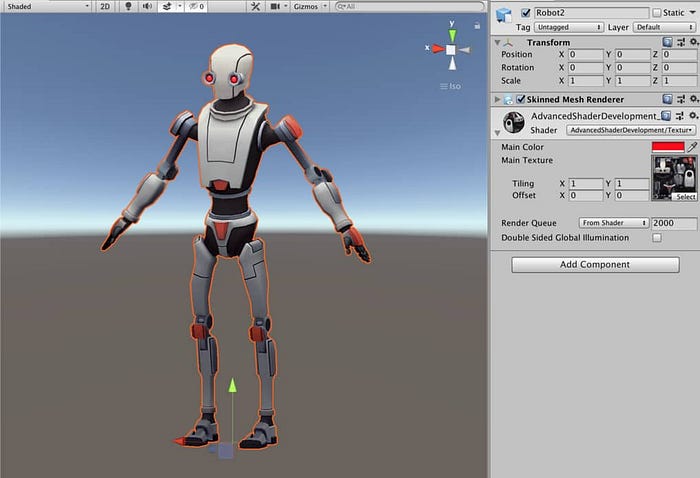Cg, the High-Level Shader and Shading Language (HLSL)
Cg, the Beginning of HLSL
Graphic programmers release improved duplicatable software for technological advancement each year. The Cg programming language makes graphic images for video game platforms constructible. Cg gives developers control, allowing impressive speeds in real-time executions within the code. NVIDIA developed Cg with Microsoft Corporation’s High-Level Shading Language (HLSL) programming systems. HLSL works with OpenGL, DirectX, Windows, Linux, Macintosh OS X, and some gaming consoles. The term ‘Cg’ represents ‘C for graphics.’ C is a programming language created around the 1970s that paved the way for languages like Cg. Over time, more program developers learn the importance of Cg language comprehension. Future graphic developers will remember it for its computer software impact.

Cg Founders and Development
NVIDIA and Microsoft teamed up in 2001 to create Cg, their first High-Level Shading Language (HLSL). HLSL is often the term used when referring to Cg, but these two have different functional elements. For example, HLSL and Microsoft’s DirectX Graphics (DirectX 9 component) relate to each other, while Direct3D is their 3D component. Cg is separate altogether as an independent program but is flexible enough to combine with Direct3D or OpenGL. Thus, Cg works great with Windows, Linux, Mac OS X, game consoles, 3D hardware from 3Dlabs, ATI, Matrox, and NVIDIA. Graphic professionals recommend the Cg language for any customizable and multifunctional program-required project.
Cg is a specialty shading language since anyone can perform it only on specific platforms. These platforms allow the manipulation of shapes and movements within graphics hardware. A data-flow computational model can control objects with different roles. This model is a data structure with a collection of vertices and fragments connected by arcs in a particular order. Cg models represent directional flow charts that assign visuals in steps bound to function as specific objects. The graphics processing unit (GPU) and central processing unit (CPU) store the computer processes within Cg. While a computer application can run without help from the GPU, the Cg program requires the CPU to start. The Cg program works with both units to run high-performance images as quickly as possible on your PC.
Real-time 3D applications within the Cg program need to animate fifteen images per second for every visual. So, each side of a 3D model is drawn over to max the pixel quality. Every vertex transforms millions of times as well for a simple animation to be produced. Cg can take these processes at swift paces throughout a scene while updating how everything looks during its progression.
General-Purpose Languages Versus Cg
Cg requires general-purpose languages to run the most efficiently. The Cg program is an auxiliary language that cannot function within the GPU without a primary program triggering the CPU. Every Cg user needs both units because their parallel processing hastens the precise launches of the code. Before NVIDIA and Microsoft developed Cg in 2001, computer graphic algorithms were made within the hardware. Low-level assembly languages were necessary when examining the GPU’s completed steps. Correcting the code was like solving an unnecessarily long mystery. Then software compilers integrated the Cg language of code instead. Programmers could finally adjust designs depending on the newest project’s goals. Cg code became very readable with remarkable reusability.
Since the Cg language manages vertices and fragments, it is less complex than most general-purpose languages. Thus, Cg does not provide object-oriented programming, keyword or memory pointers, or input and output operations support. The limitations are by no fault of the program but a consequence of today’s technological advances. The only way to correct these lacking features is by updating the language further. Luckily, Cg can handle arrays, structures, loops, conditionals, and functions. The functions are like those used in many other programs, such as vectors and matrices. Cg’s Standard Library provides a list of code functions used to make any project much more productive. The system can even fulfill given tasks independent of each other to prevent undesirable side effects.
Visual Profiles and Program Speed
The Cg program is simpler to use compared to other 3D applications. Yet, it still requires the developer to use the PC’s GPU and graphics API to form assigned visual profiles. Specific identities for every given characteristic keep the program from mixing the visual code. These restrictions additionally make the program run with less overworked areas within the code. Each programmer who applies Cg in their work will have a better project if it is not over-packed with textures. If Cg underwent an upgrade within the progressing capabilities of the GPU, code profiles might no longer be necessary.
An extraordinary example of a program’s graphics affecting its speed is when a video gamer tweaks their settings in Minecraft. Minecraft is a sandbox platformer where each player edits their world by breaking or placing various block types. When players adjust their visuals to display more textures per pixel, the frames per second (FPS) decrease. The computer program now has to work harder to do the same tasks it was performing before. More power routes towards the graphic displays and enhances every visual component as a result.
Computer Graphics Today
The Cg language requires partnering with the computer’s GPU to render images. Since computer graphics hardware advances quickly in today’s age, Cg and other programs alike have to match the pace. Graphics rapidly progress because the semiconductor industry plans to double transistors on microchips every eighteen months. Power productivity, as a result, doubles through Moore’s Law. Moore’s Law requires computer industries to increase the speed and capabilities of every made PC while consumers pay less. This guideline has made the PC’s cost around fifty percent lower than the original price tag. While PC power doubles and realistic graphic images improve, everyone becomes more aware of every flaw. Consumers desire everything to be aesthetically pleasing. Making graphic illustrations need consistent updates.
There will be challenges to conquer for graphic programmers because they can never achieve realistic perfection. Thankfully, the creativity and imaginative talent put into graphics programs, including Cg, can get closer to real-world portrayals without fail. By splitting up different tasks within a computer graphics design and passing them to many developers, every 3D image simplifies. The completed projects are even more polished when working hand-in-hand with the multitude of microchip transistors added.
The biggest and the most dominant force that motivates the implementation of Moore’s Law is the human desire for visual entertainment. As long as civilization relies on the need to feel engaged in something enjoyable, graphic realism will keep changing to meet the people’s demands. Microsoft and NVIDIA constructed the Cg program to fulfill this sole purpose.
C, Cg, and CgFX
Cg and C are very similar in their high-level programming capabilities. Both need the programmer to assign different vertices and fragments processed to them specifically within the GPU. Once assigned to Cg, the developer’s shading algorithms can translate and execute. The original builders of Cg’s format made sure the product kept the general-purpose C programming language as a syntax and semantics base point. Microsoft and NVIDIA then combined this foundation with the RenderMan Shading Language’s offline concepts and the community’s hardware shading techniques. The grouping allowed functionality on OpenGL and Direct3D real-time 3D interfaces. Yet, Cg does differ from C because Cg can make performance changes along with the GPU for better graphic integration.
As Cg partners with a designated primary general-purpose language, beautiful 3D scenes come alive at real-time rates. The GPU receives commands configured by OpenGL or Direct3D through compilers for translation. The quality of the visuals Cg can run is limited based on the targeted texture units. Software developers can manage this through code tweaks. The compilers have a Cg runtime to assist in the programmer’s control over static and dynamic compilations. The coder responsible for the project can choose to take advantage of the provided libraries within each program or not. But, they can only use specific libraries like CgGL or CgD3D one at a time. Regulation of libraries keeps the trails between the compilers and the Cg runtime from producing inaccurate translations for the GPU.
For Cg to display the full effects of 3D models, Microsoft and NVIDIA added the CgFX format. While the syntax with the CgFX remained similar, the files (.fx) grew to hold many text-based Cg programs. Each file can define rendering effect states, texture mapping, and vertex and fragment presentation. The toolkit itself provides users with meaningful authority over the program’s step processes. CgFX allows many possibilities per effect, permits alterations for undefined features, and annotates values per shader parameter, which advances Cg dramatically.
Beginner’s Guide to Cg
When a graphics developer begins with the Cg language, vertex program concepts need to be understood. Below is a beginner’s example of a vertex program:
Based on the code above, the program assigns the input 2D position of a vertex to a 2D vertex output. The RGBA (red, green, blue, alpha) constant outputs a green color for the vertex. Upon closer examination of lines one through four, the program creates an output structure that represents the result. While the general-purpose CPU language can multitask, Cg needs to output a group of values together in a particular range to assign positions. The keyword ‘struct’ identifies C2E1v_Output as having the characteristics printed within the curly brackets. The example shows a designated setting and color for C2E1v_Output as the code continues to label the 2D positioning in lower lines.
Identifiers are crucial in Cg and other graphic development programs. They can include uppercase or lowercase alphabetic letters, digits zero through nine, and the underscore (_). Programmers need to avoid beginning an identifier with a digit or placing a Cg-provided keyword within an identifier. These two mistakes will lead to errors within the code. The identifiers used within the above example are as follows with their explained purpose. C2E1v_green classifies the provided function. ‘position’ is a keyword that designates vertex parameters. ‘OUT’ represents the output. ‘float4’ is a vector data type within Cg’s Standard Library controlling position and color. ‘color and position’ are characteristics within the provided function. Ordering the elements as ‘position and color’ would also be correct since it would not change the valued output.
Cg at a Glance
The High-Level Shader and Shading Language (HLSL) Cg is one of the finest real-time 3D applications. Cg continues to represent the core foundations of further updated graphic development. It gave programmers a practical tool to manage the presentation of images. Yet, it can only be functional with a Microsoft Corporation-compatible general-purpose language program. Cg’s use of data-flow computational models and compilers has advanced graphic speed and precision. The Cg program reads code while changing the program’s performance and textures. As computer software modified over time, the Cg language was outgrown and left behind. The final Cg Toolkit 3.1 was available in April 2012 before other HLSLs took their place, launching visual technology further.
